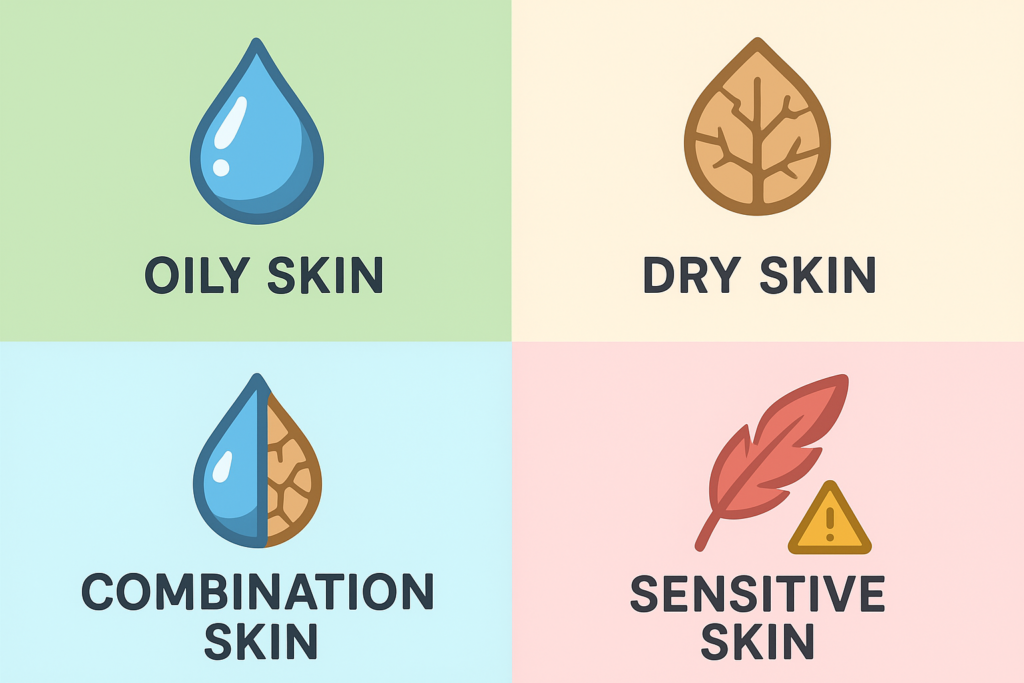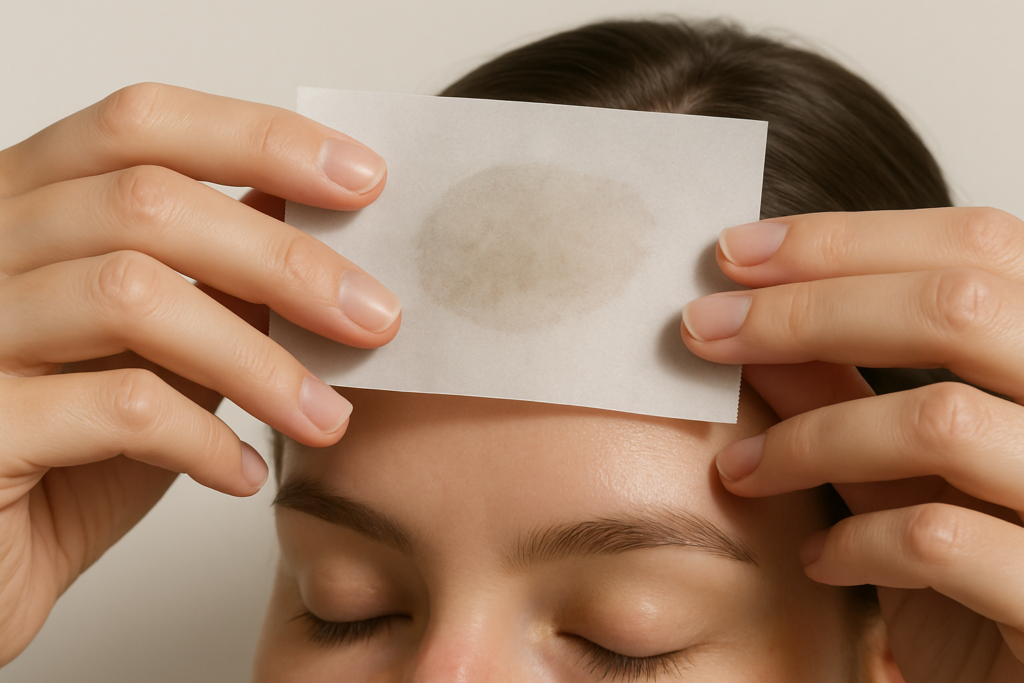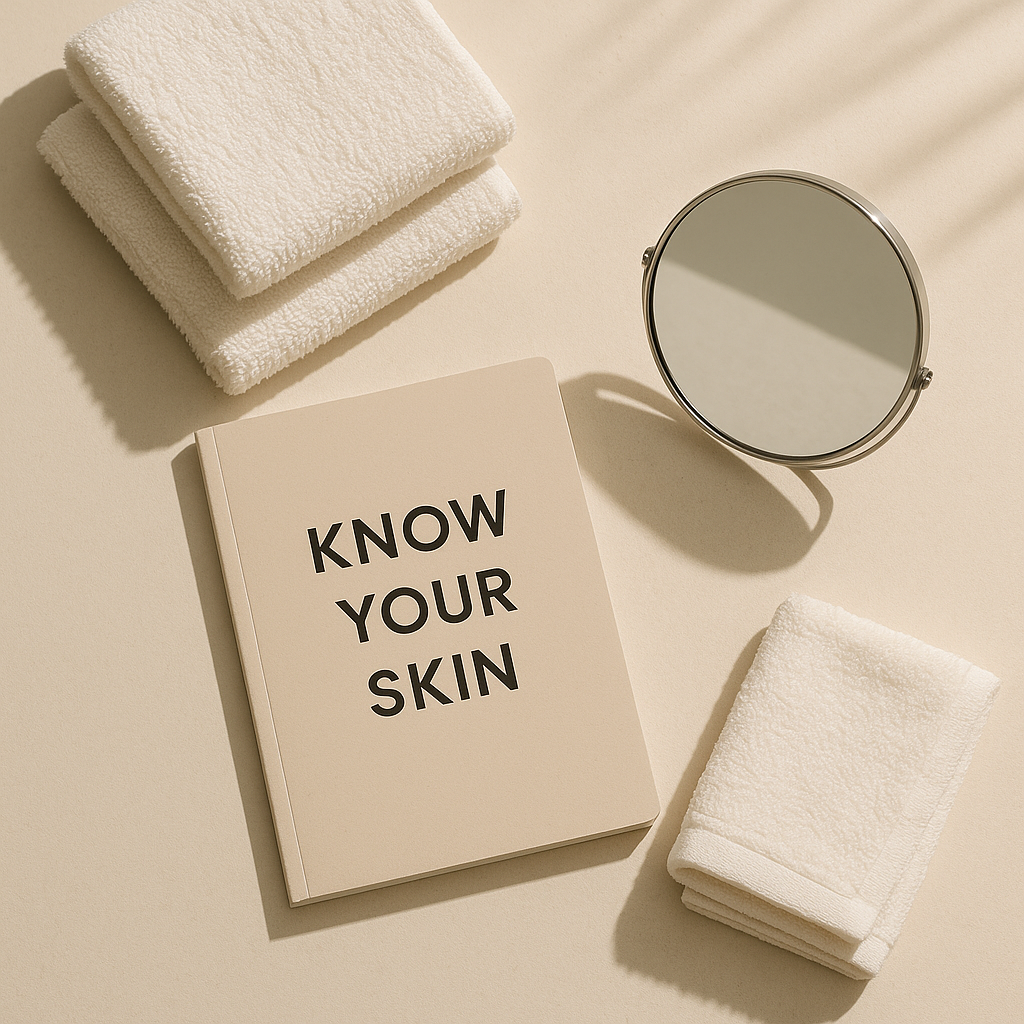Knowing your skin type is the first and most essential step toward building an effective skincare routine. Whether you have oily, dry, combination, or sensitive skin, understanding your skin’s needs can help you avoid irritation, choose the right products, and achieve healthier, more balanced skin.
In this guide, we’ll show you exactly how to determine your skin type at home with simple, science-backed methods — no dermatologist appointment required.
Why Knowing Your Skin Type Matters
If you’re applying skincare products without knowing your skin type, you may be doing more harm than good. Using the wrong formulas can lead to breakouts, dryness, oiliness, or even damage to your skin barrier. Understanding your skin type allows you to:
- Choose the right cleansers, moisturizers, and treatments
- Avoid unnecessary products that may irritate your skin
- Create a skincare routine tailored to your needs

Common Skin Types (and Their Characteristics)
Before we dive into the testing method, let’s review the four main skin types:

1. Oily Skin
- Shiny appearance, especially in the T-zone
- Enlarged pores
- Prone to blackheads and acne
2. Dry Skin
- Tightness after cleansing
- Flaky or rough patches
- Dull complexion
3. Combination Skin
- Oily in the T-zone (forehead, nose, chin)
- Dry or normal cheeks
- Breakouts only in certain areas
4. Sensitive Skin
- Easily irritated by skincare or weather changes
- Redness or itching
- Burning or stinging with some products
Step-by-Step: How to Determine Your Skin Type at Home
1. The Bare-Faced Test
This is one of the easiest ways to identify your skin type:
- Wash your face with a gentle cleanser and pat dry.
- Leave your skin bare — no moisturizer or other products.
- Wait for 1 hour.
- Observe how your skin feels and looks:
| Area | Oily Skin | Dry Skin | Combination | Normal |
|---|---|---|---|---|
| Forehead | Shiny | Tight | Shiny | Comfortable |
| Nose | Shiny | Flaky | Shiny | Comfortable |
| Cheeks | Oily | Dry/flaky | Normal/dry | Comfortable |
2. The Blotting Sheet Test
- Gently press blotting paper on different areas of your face.
- Hold it up to light:
- Oil on all areas? → Oily skin
- Little to no oil? → Dry skin
- Oil only in T-zone? → Combination skin
- Minimal oil and no tightness? → Normal skin

What to Do After Identifying Your Skin Type
Once you’ve discovered your skin type, you can begin tailoring your routine accordingly:
- Oily skin: Use gel-based cleansers and oil-free moisturizers
- Dry skin: Choose creamy cleansers and nourishing moisturizers with hyaluronic acid
- Combination skin: Balance hydration with light, non-comedogenic products
- Sensitive skin: Stick to fragrance-free, hypoallergenic formulas
Final Thoughts
Understanding your skin type is not about labels — it’s about getting in tune with your skin’s needs. Remember, your skin type can change over time due to weather, hormones, or lifestyle, so reassess every few months.
Want more skin health tips and science-backed skincare guides? Subscribe to our blog and stay updated with the latest in skincare education.

